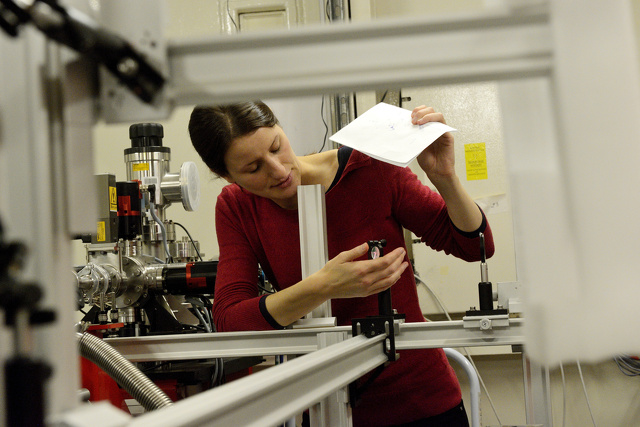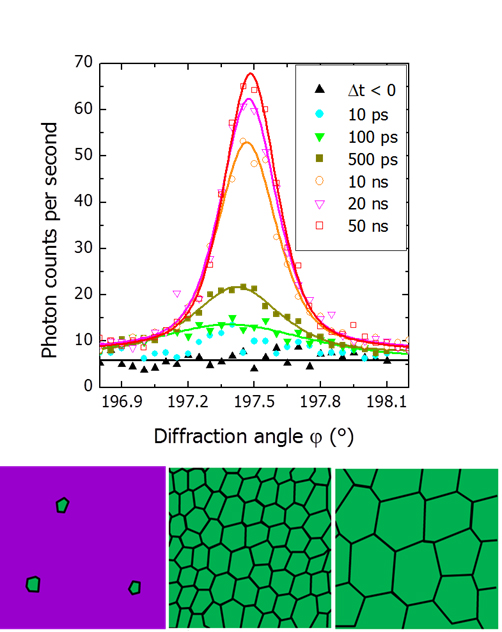Claire Laulhé, lecturer at the Paris-Saclay University (Paris-Sud) and affiliated to the SOLEIL synchrotron for her research, is honored this year with the CNRS bronze medal. The CNRS Bronze Medal recognizes a researcher's first work, and places the recipient as a talented specialist in a particular field. This medal is a way for the CNRS to encourage the researcher to continue work that has met initial success and already produced fruitful results.

Claire Laulhé is interested in atomic structures of solids and their impact on physical properties such as electrical conductivity. At SOLEIL, she specialized in the study of structural dynamics induced by laser pulses, on ultra-short time scales (sub-nanosecond and sub-picosecond). The laser beam carries photons of typically 1.5 eV energy, which interact with the valence electrons that are involved in chemical bonding, magnetism and electrical conduction. Out-of-equilibrium states arise from the laser-electron interaction, whose relaxation dynamics reveals the couplings between atomic structure, magnetic properties and electronic states in the complex system that the solid is ("many-body problem").
The bronze medal awarded to Claire Laulhé rewards both the development of a pump-probe diffraction setup at CRISTAL beamline, and recent measurements of photo-induced dynamics in charge density wave (CDW) compounds. CDW states result from electron-phonon coupling in a metal and are characterized by concommittant modulations of the atomic structure and electron density, directly observable by X-ray diffraction. In the tantalum disulfide 1T-TaS2, Claire Laulhé studied the mechanism of appearance of a photo-induced CDW state, via the temporal dependence of one of its diffraction peaks [PRL 118, 247401 (2017)]. This study provides an unprecedented level of detail on the description of a photo-induced phase transition, especially on the process of its internal ordering at the picosecond and nanometer scales [Fig. 1].

Fig. 1: (top) Evolution of the profile of the diffraction peak associated with the laser-induced charge density wave phase in 1T-TaS2. Absent before laser excitation (Δt <0), the diffraction peak appears within a few picoseconds. It then becomes narrower and more intense on time scales ranging up to ten nanoseconds. (Bottom) The analysis of the diffraction profiles allows describing the mechanism of the appearance of the photo induced phase, by nucleation-growth followed by coarsening of the domains.
